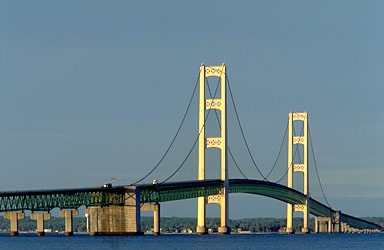acid rain
pollution
form of precipitation containing a heavy concentration of sulfuric and nitric acids. The term is also commonly applied to snow, sleet, and hail that manifest similar acidification. Such precipitation has become an increasingly serious environmental problem in many areas of North America, Europe, and Asia (see video--> ). Although this form of pollution is most severe in and around large urban and industrial areas, substantial amounts of acid precipitation may be transported great distances.
). Although this form of pollution is most severe in and around large urban and industrial areas, substantial amounts of acid precipitation may be transported great distances.
 ). Although this form of pollution is most severe in and around large urban and industrial areas, substantial amounts of acid precipitation may be transported great distances.
). Although this form of pollution is most severe in and around large urban and industrial areas, substantial amounts of acid precipitation may be transported great distances.
 The process that results in the formation of acid rain generally begins with emissions into the atmosphere of sulfur dioxide and nitrogen oxide. These gases are released by automobiles, certain industrial operations (e.g., smelting and refining), and electric power plants that burn fossil fuels such as coal and oil. The gases combine with water vapour in clouds to form sulfuric and nitric acids. When precipitation falls from the clouds, it is highly acidic, having a pH value of about 5.6 or lower. (The term pH is defined as the negative logarithm of the hydrogen ion concentration in kilograms per cubic metre. The pH scale ranges from 0 to 14, with lower numbers indicating increased acidity.) At several locations in the eastern United States and western Europe, pH values between 2 and 3 have been recorded. In areas such as Los Angeles, San Francisco, and Whiteface Mountain in New York, fog is often 10 or more times as acidic as the local precipitation.
The process that results in the formation of acid rain generally begins with emissions into the atmosphere of sulfur dioxide and nitrogen oxide. These gases are released by automobiles, certain industrial operations (e.g., smelting and refining), and electric power plants that burn fossil fuels such as coal and oil. The gases combine with water vapour in clouds to form sulfuric and nitric acids. When precipitation falls from the clouds, it is highly acidic, having a pH value of about 5.6 or lower. (The term pH is defined as the negative logarithm of the hydrogen ion concentration in kilograms per cubic metre. The pH scale ranges from 0 to 14, with lower numbers indicating increased acidity.) At several locations in the eastern United States and western Europe, pH values between 2 and 3 have been recorded. In areas such as Los Angeles, San Francisco, and Whiteface Mountain in New York, fog is often 10 or more times as acidic as the local precipitation.Precipitation and fog of high acidity contaminate lakes and streams; they are particularly harmful to fish and other aquatic life in regions with thin soil and granitic rock, which provide little buffering to acidic inputs. It also has been discovered that aluminum is leached from the soil in regions subjected to such acid precipitation, and that dissolved aluminum seems to be extremely toxic to aquatic organisms. All forms of acid precipitation have been found to damage various kinds of vegetation, including agricultural crops and trees, chiefly by inhibiting nitrogen fixation and leaching nutrients from foliage. In addition, these pollutants can corrode the external surfaces of buildings and other man-made structures; marble structures and statues are especially vulnerable to their damaging effects.
The problem of acid rain has been mainly dealt with in two ways. Adherents to the “cost-sharing” principle believe acid rain is a regional problem that should be dealt with collectively by all countries affected by the problem. Supporters of the “polluter pays” approach highlight the actions and responsibility of the polluter, which they believe should pay for the damages caused by its habits and institutions.
- Principal cosmogenic and uranium-thorium series radioisotopes
- Principal national parks of the world
- Principal nighttime meteor showers
- Principal oxidation reactions in the combustion of coal
- Principe Di Canino E Di Musignano Bonaparte, Charles-Lucien
- principe di Venosa Gesualdo, Don Carlo
- Princip, Gavrilo
- principle of competitive exclusion
- principle of microscopic reversibility
- principle of sufficient reason
- principles of physical science
- Prineville
- Pringle, Sir John, 1st Baronet
- Pringle, Thomas
- Pringsheim, Nathanael
- prinia
- Prinsep, James
- Prinstein, Meyer
- printed circuit
- printing
- printing press
- printmaking
- Printz, Johan Björnsson
- Prinz zu Hohenlohe-Ingelfingen, Kraft
- Prinz zu Wied-Neuwied, Maximilian